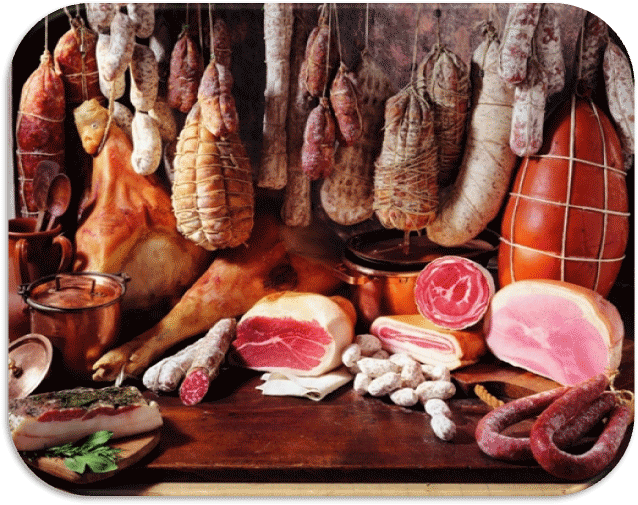Salumi: classification and differences

An extract of the original document…
The aged salume – a fermented food
Ground meat salumi can be eaten fresh or aged.
If eaten fresh, there are no problems, it is sufficient to follow basic hygiene standards.
An aged salume presents the problem of having to keep for a long time in order to develop complex organoleptic characteristics.
An industrially produced product is made to last for a much longer time than an artisanal salume which tends to deteriorate more rapidly. The industry must use preservatives and cosmetic food color additives (which do not improve the taste, only the aspect), because of commercial and distribution requirements.
Meat itself is low in sugar content and therefore the fermentation process occurs slowly and may not be able to curb the formation of harmful bacteria and toxins.
In artisanal salumi fermentation occurs naturally and the cleanliness and sanitary conditions of the work area must be scrupulous in order to avoid serious problems.
In industrial salumi, fermentation of the ground meats is “helped” by the addition of sugars (lactose, glucose, saccharose) in the form of powdered milk or milk whey up to a maximum of1% of the weight, and starters (lactobacillus), as well as nitrates up to a maximum of 250 mg/kg. Thus, a lactic fermentation takes place which increases the acidity, reduces the pH factor, makes the protein coagulate, stabilizes the color and preserves the product.
But things do not always go according to plan.
Sometimes the sugars are not dosed properly and the acidity of the salumi increases too much. Then, the mould, an essential element in the ageing process, cannot bring back into balance the excess acidity and this then creates digestive problems for the consumer.
Mould is fundamental in the ageing process because it acts like a sponge, absorbing excess humidity when needed and adding it back when the drying/ageing area environment is too dry.
To be continued…


